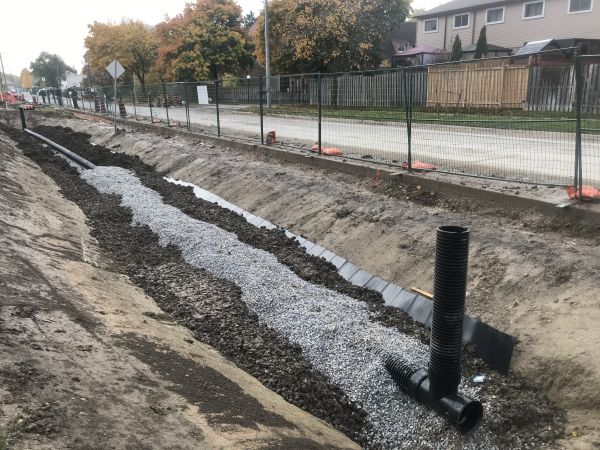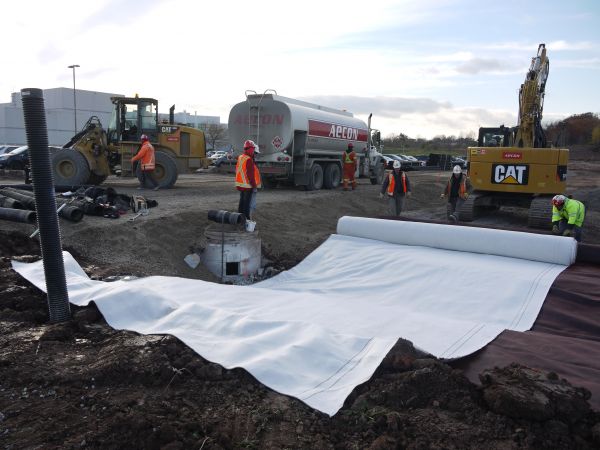Difference between revisions of "Impermeable liners: Installation"
Jump to navigation
Jump to search
JamesCowan (talk | contribs) |
JamesCowan (talk | contribs) |
||
| Line 19: | Line 19: | ||
<gallery mode="packed" widths=300px heights=300px> | <gallery mode="packed" widths=300px heights=300px> | ||
liner-roadside.jpg | An impermeable liner was placed along one side of the LID facility to prevent infiltrated water from contacting the nearby watermain in the road right-of-way, which runs parallel to the feature. | liner-roadside.jpg | An impermeable liner was placed along one side of the LID facility to prevent infiltrated water from contacting the nearby watermain in the road right-of-way, which runs parallel to the feature. | ||
bentonite-clay-liner.jpg | | bentonite-clay-liner.jpg | Impermeable Bentofix® liner being rolled out in LID practice area. | ||
</gallery> | </gallery> | ||
Revision as of 18:50, 20 July 2022
Impermeable liners can be applied when LID features are not intended to infiltrate runoff into the underlying soil. They protect building foundations or other subsurface infrastructure. They also prevent infiltration through contaminated soils. Where building foundations next to the LID feature are not waterproofed, liners can be used to protect adjacent infrastructure.
Construction Steps:
- Compact 30 – 50 mm of sand over the soil onto which the membrane will be installed to protect against punctures. Alternatively, a geotextile can be used in the place of sand
- Place lengths of liner on the bed of the facility as per the manufacturer’s specifications
- Provide 150 mm of overlap between adjacent lengths of liner
- Secure liner in-place and bond together the overlapping portions of liner as specified by the manufacturer
- Seal a flange to the pipe and liner when pipes provide drainage from the practice.
- Compact sand or apply cushion fabric on top of the liner to protect against punctures
Key Inspection Points:
- Liner matches design specifications
- Liner installation procedures conform to manufacturer’s specifications
- Minimum overlap between lengths of liner is achieved
- Need for protection of building footprints and adjacent infrastructure confirmed through field verification of setbacks
- Sand and/or geotextile are applied on both sides of the liner to protect against punctures
- Lengths of liner are bonded together to ensure protection against groundwater penetration and contamination.

